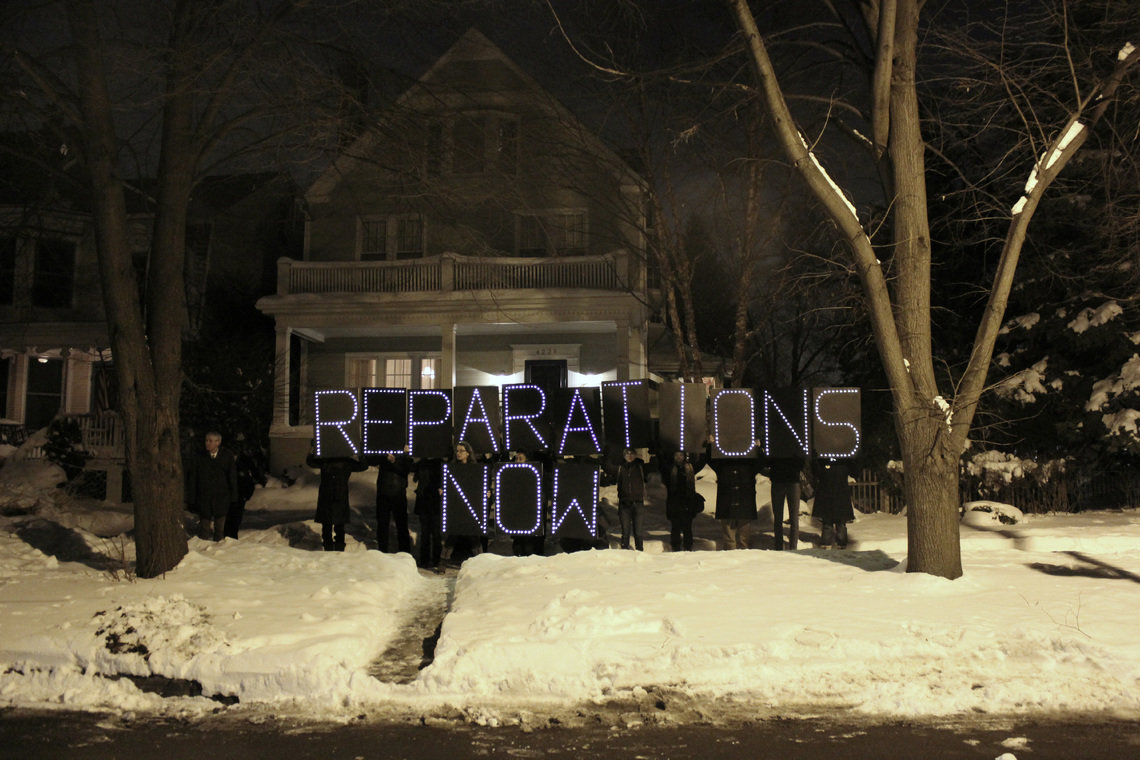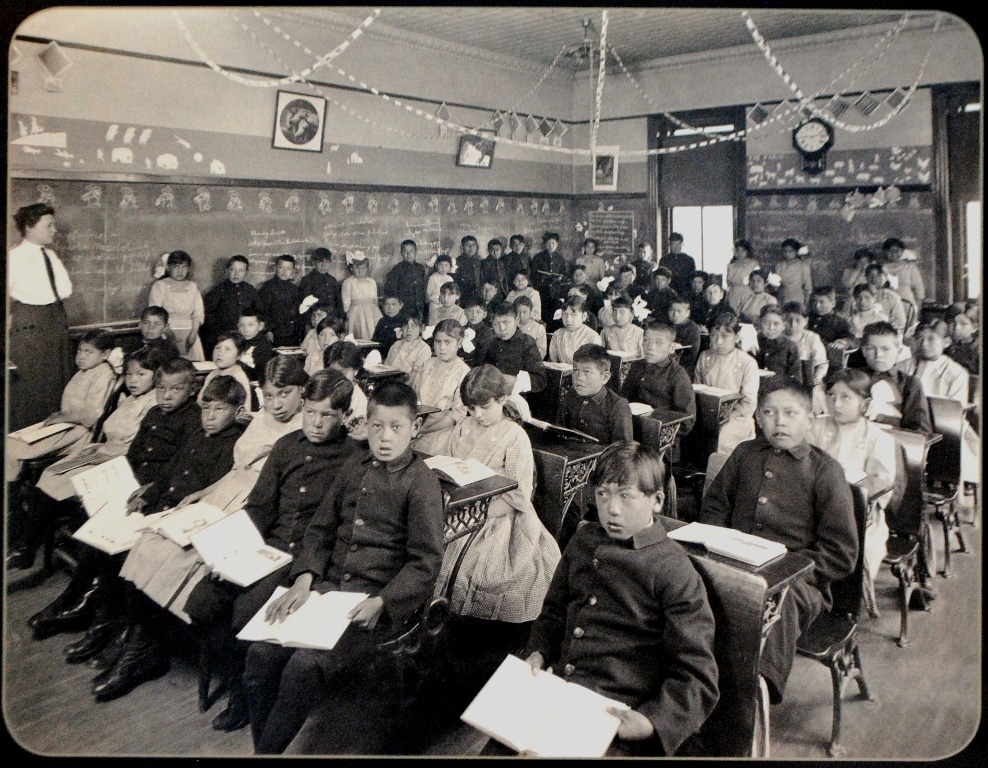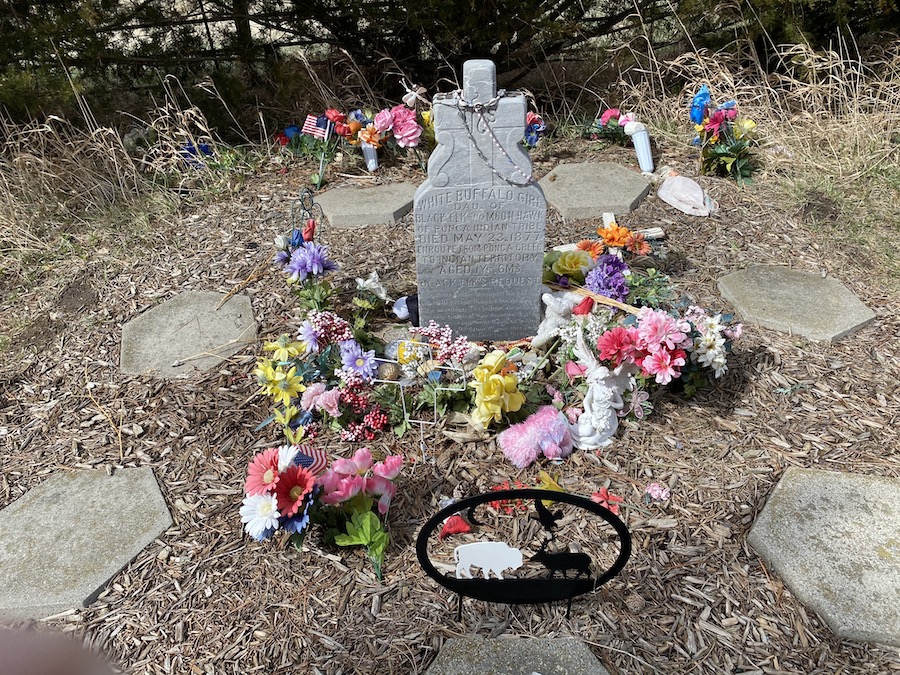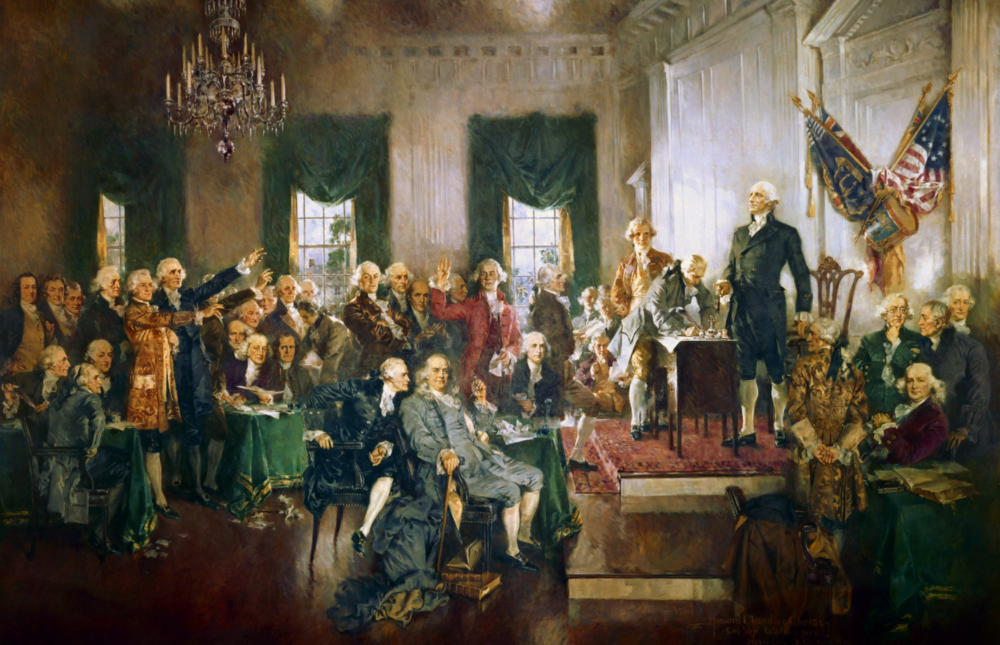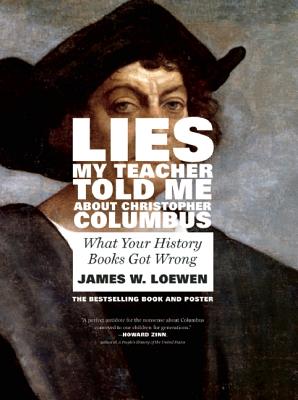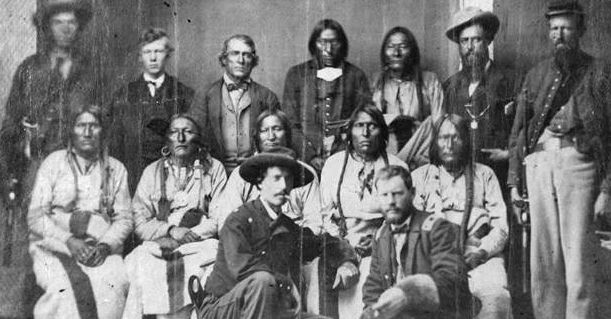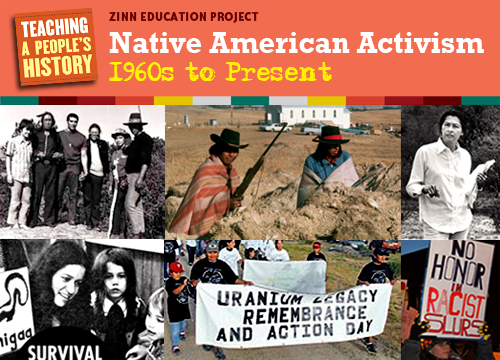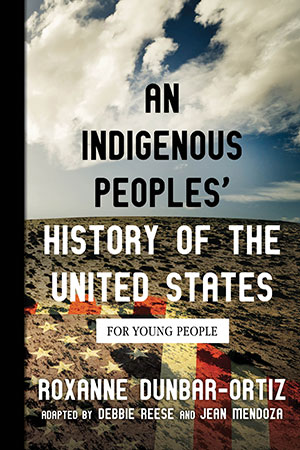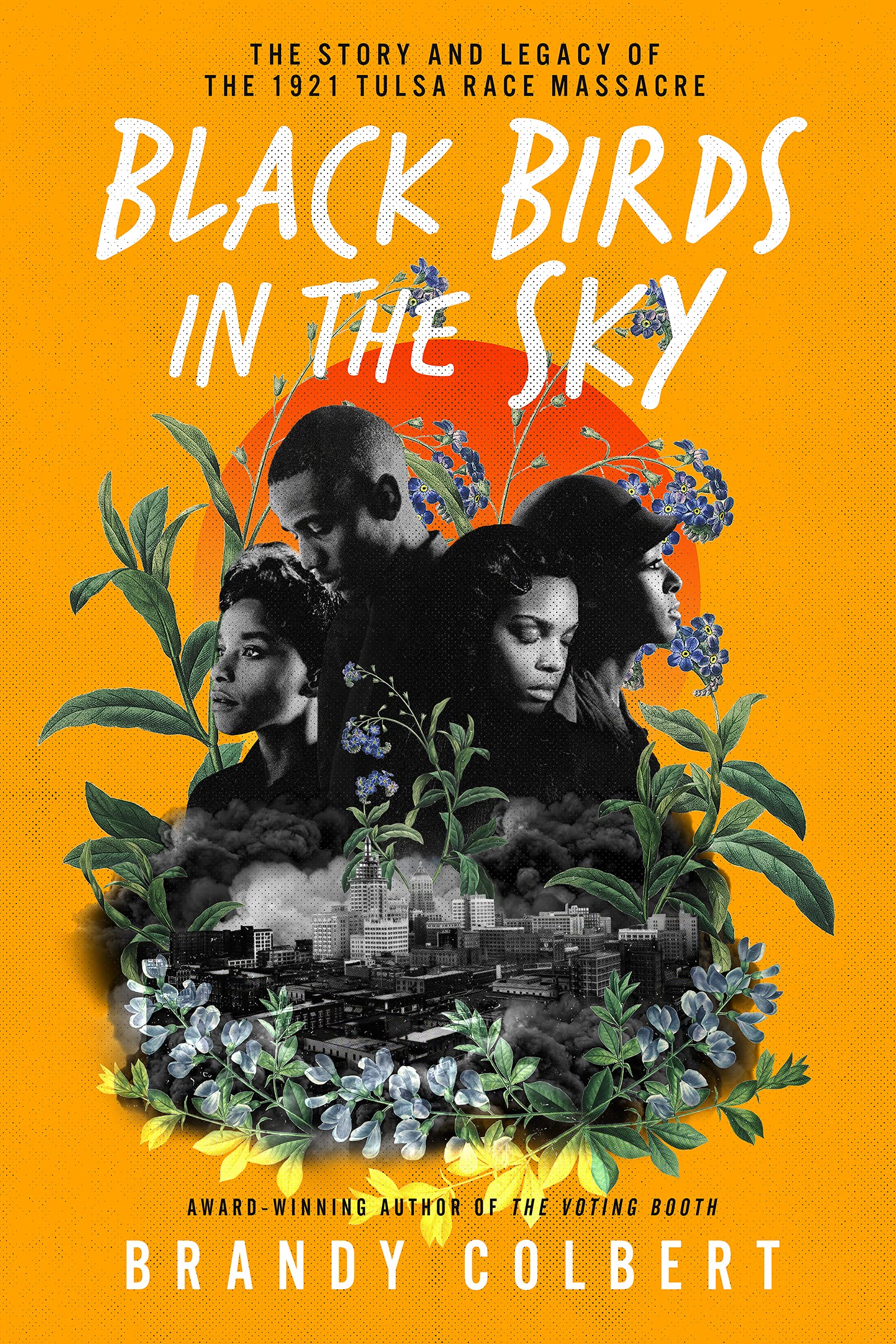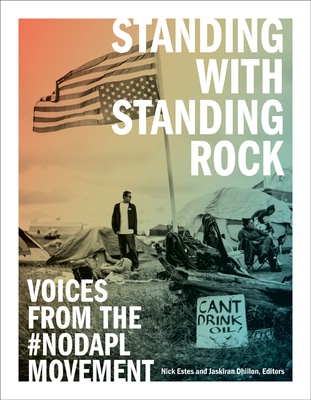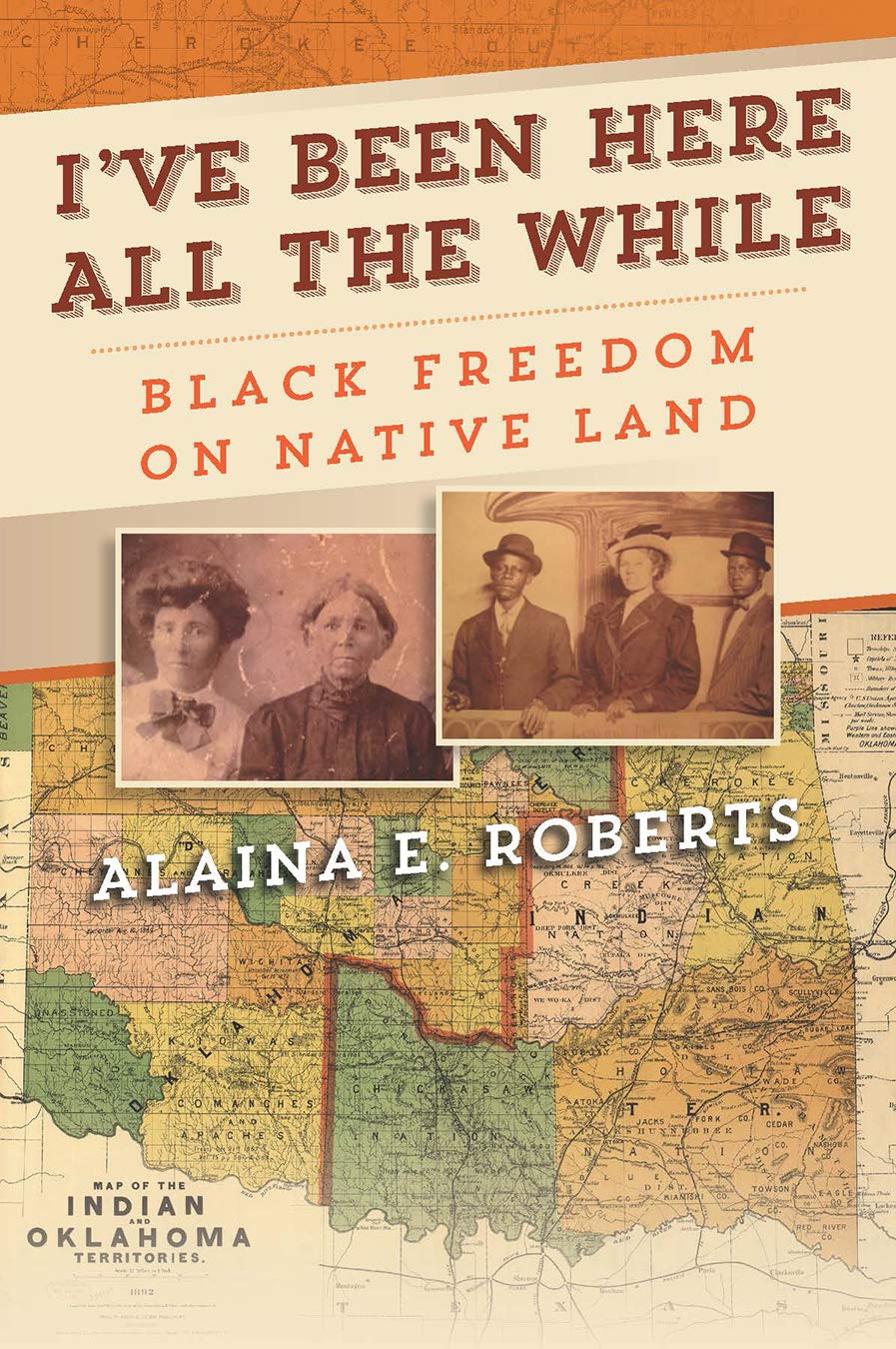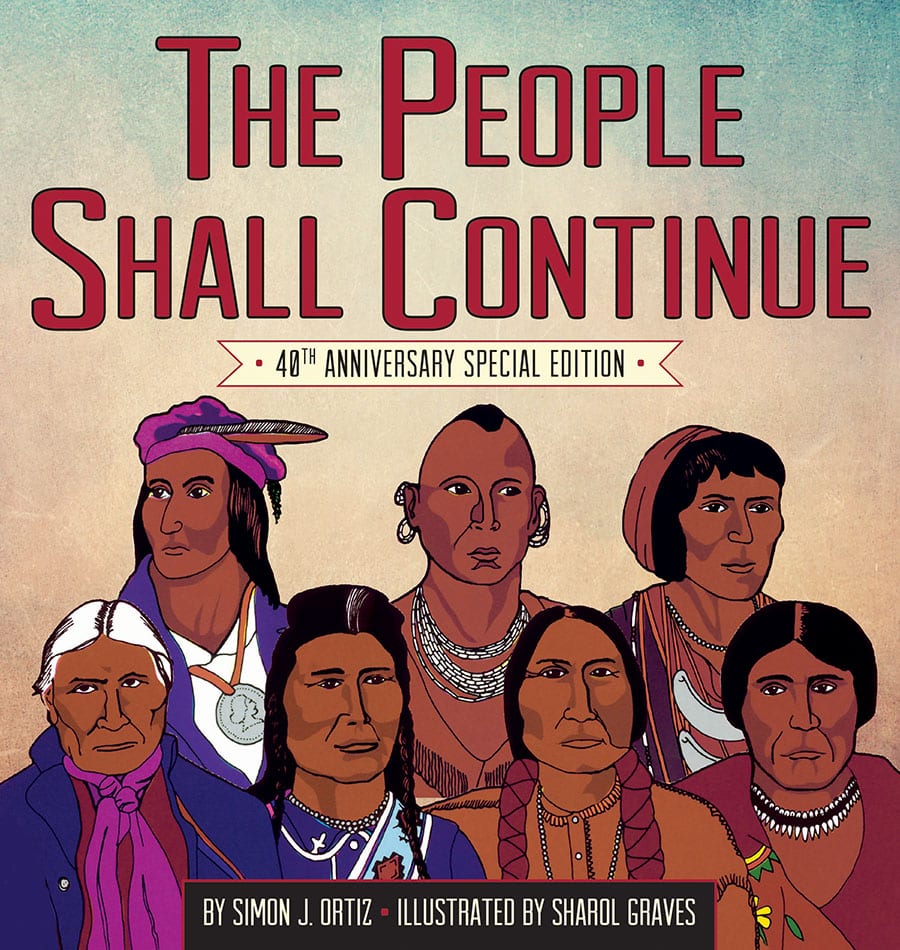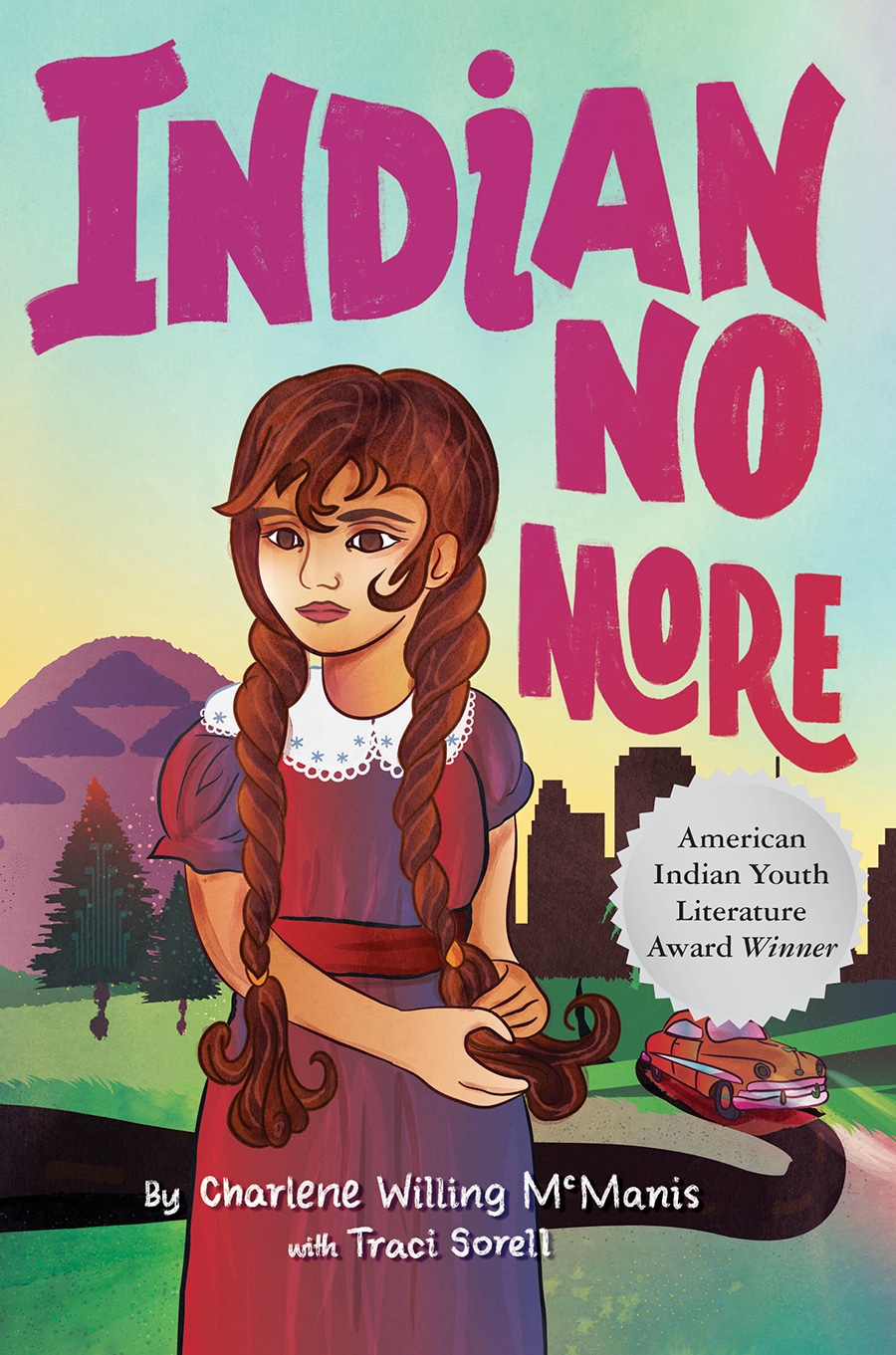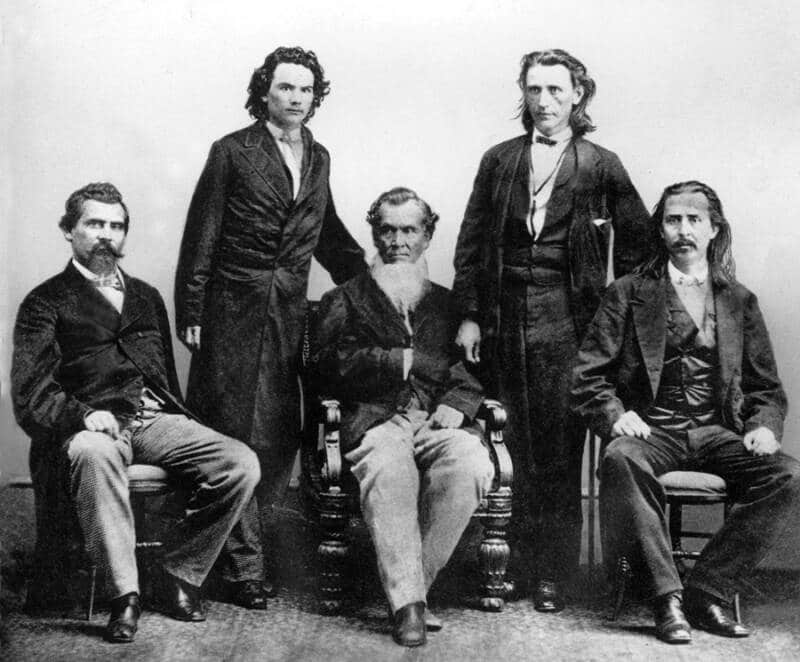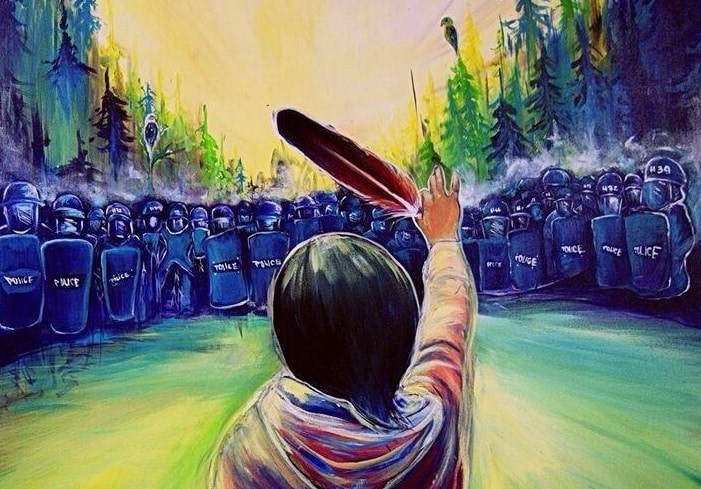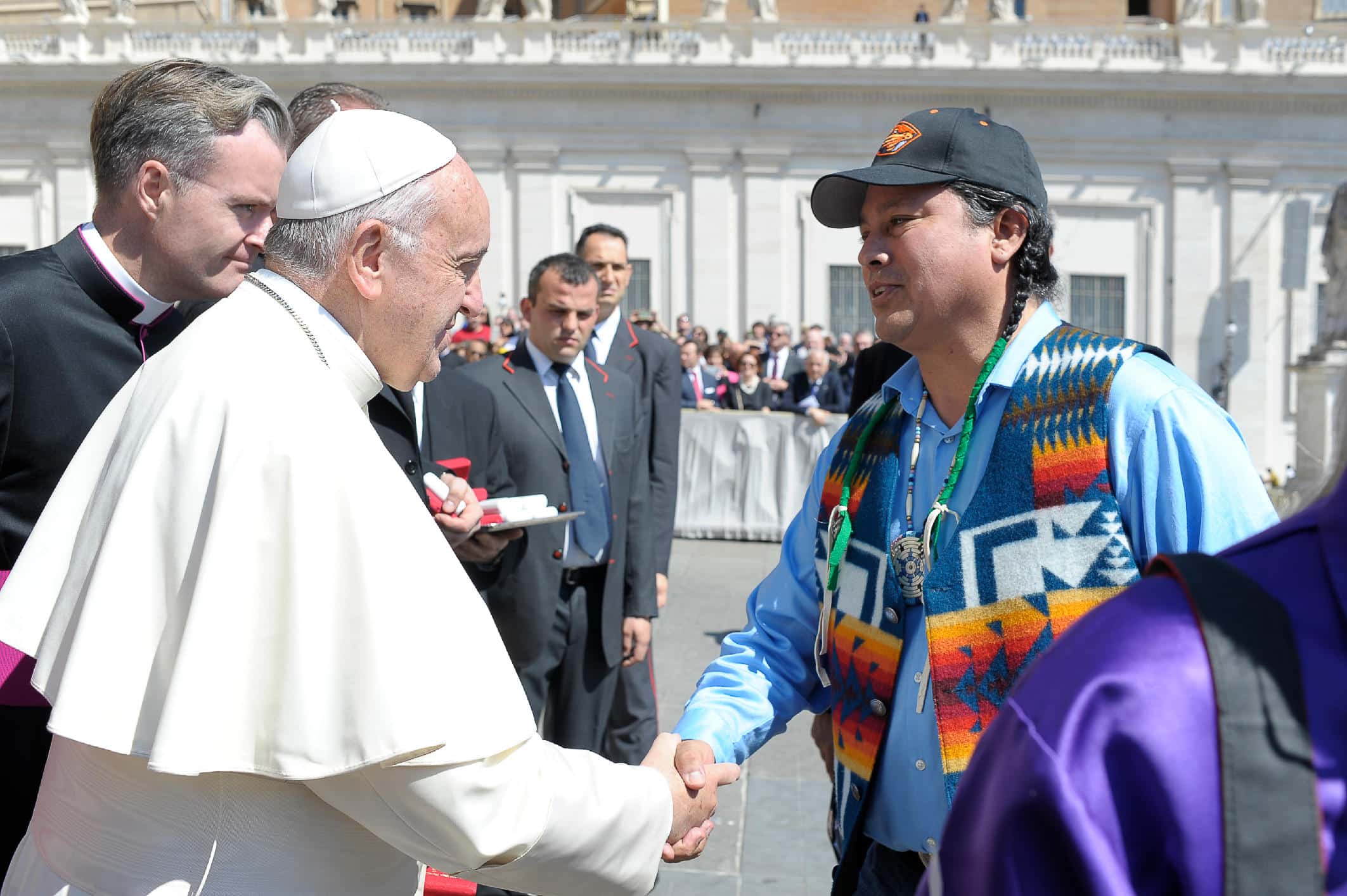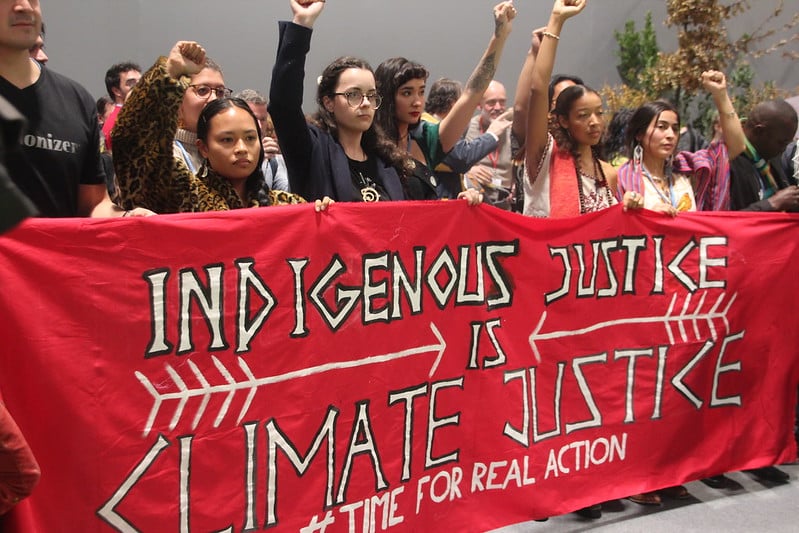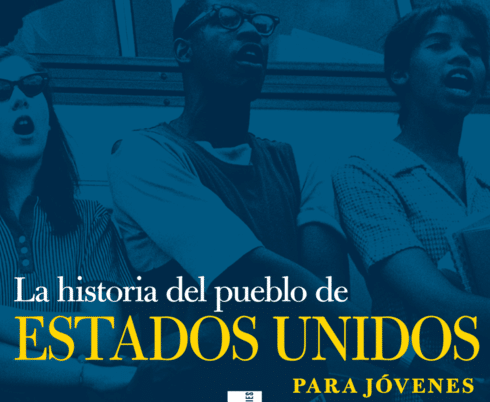Teaching Activity. By Ursula Wolfe-Rocca, Alex Stegner, Chris Buehler, Angela DiPasquale, and Tom McKenna.
Students meet dozens of advocates and recipients of reparations from a variety of historical eras to grapple with the possibility of reparations now and in the future.
Continue reading
The Indian Industrial School of Genoa, Nebraska, the fourth non-reservation boarding school, was established by the Office of Indian Affairs.
Continue reading
Along the “Trail of Tears” in Neligh, Nebraska, a farmer signed a deed to return ancestral land to the Ponca Tribe.
Continue reading
Teaching Activity. By Bob Peterson. Rethinking Schools. 14 pages.
A role play on the Constitutional Convention which brings to life the social forces active during and immediately following the American Revolution with focus on two key topics: suffrage and slavery. An elementary school adaptation of the Constitution Role Play by Bill Bigelow. Roles available in Spanish.
Teaching Activity by Bob Peterson
Continue reading
Teaching Activity. By Bill Bigelow. 10 pages.
What led up to the Trail of Tears? In this lesson, students learn about the decision to remove the Cherokee and Seminole people from their lands.
Continue reading
Poster and booklet. By James W. Loewen. 2006; updated 2014.
Graphic corrective to the traditional textbook narratives about Columbus.
Continue reading
A Colorado Cavalry unit, on orders from Colorado’s governor and ignoring a surrender flag, brutally attacked Cheyenne and Arapaho Tribes. White abolitionist Silas Soule was assassinated for reporting on the event.
Continue reading
Overview of Native American activism since the late 1960s, including protests at Mt. Rushmore, Alcatraz, Standing Rock, and more.
Continue reading
Book — Non-fiction. By Roxanne Dunbar-Ortiz; adapted by Debbie Reese and Jean Mendoza. 2019. 244 pages.
The original academic text is fully adapted by renowned curriculum experts Debbie Reese and Jean Mendoza, for middle-grade and young adult readers.
Continue reading
Book — Non-fiction. By Brandy Colbert. 2021. 216 pages.
History of Oklahoma including Trail of Tears, Reconstruction, Black towns, Red Summer, Jim Crow, Black and white newspapers, lynchings, Tulsa Race Massacre, and the ongoing fight for reparations and historical memory.
Continue reading
Book — Non-fiction. Edited by Nick Estes and Jaskiran Dhillon. 2019. 448 pages.
Through poetry and prose, essays, photography, interviews, and polemical interventions, the contributors, including leaders of the Standing Rock movement, reflect on Indigenous history and politics and on the movement's significance.
Teaching Activity by Nick Estes (editor)
Continue reading
Book — Non-fiction. By Nick Estes. 2024. 328 pages.
In Our History Is the Future, Nick Estes traces traditions of Indigenous resistance that led to the #NoDAPL movement.
Teaching Activity by Nick Estes
Continue reading
Book - Non-fiction. By Alaina E. Roberts. 224 pages. 2021.
Through chapters that chart cycles of dispossession, land seizure, and settlement in Indian Territory, Alaina E. Roberts connects debates about Black freedom and Native American citizenship to westward expansion onto Native land.
Continue reading
Picture Book. By Simon J. Ortiz, illustrated by Sharol Graves. 2022. 32 pages.
This powerful telling of the history of the Native/Indigenous peoples of North America recounts their story from Creation to the invasion and usurpation of Native lands.
Teaching Activity by By Simon J. Ortiz, Illustrated by Sharol Graves
Continue reading
Book — Historical fiction. By Charlene Willing McManis and Traci Sorell. 2016. 224 pages.
This award-winning children's book follows a young Indigenous girl's quest to understand her identity as an Indian despite being so far from home.
Continue reading
The Slave Revolt of 1842 — when dozens of enslaved Black people in Webbers Falls, Oklahoma fought back and briefly escaped from their Cherokee overseers — was the largest rebellion of enslaved people in Indian Territory history.
Continue reading
A coalition of groups set up a series of road blockades preventing gas exploration in New Brunswick, Canada.
Continue reading
After becoming governor of Florida in 1821, Andrew Jackson attacked the native and Black maroon community at Angola.
Continue reading
A delegation representing Native nations marched upon the Vatican and were successful in convincing the Vatican to revoke the Doctrine of Discovery.
Continue reading
Indigenous representatives from around the world met in Anchorage, Alaska, in April 2009, to share experiences and strategies for confronting environmental degradation. They issued a declaration that details their observations and demands from the front lines of the climate crisis.
Continue reading
Book — Non-fiction. By Howard Zinn, adapted by Rebecca Stefoff with additions by Ed Morales. Translated by Hugo García Manríquez. 2023. 608 pages.
A Spanish translation of the young adult version of the best-selling A People’s History of the United States.
Continue reading
Teaching Activity. Smithsonian’s National Museum of the American Indian Native Knowledge 360° initiative. 9 pages.
Provides primary sources, maps, images, and background history to offer teachers and students insight into the impact of the California gold rush on Native Americans.
Continue reading
Jim Thorpe was the first Native American to win Olympic gold for team U.S.A.
Continue reading
The undefeated Carlisle Indian School football team faced off against the Army football team at the West Point Academy campus in front of a crowd of 3,000 people. The Carlisle team defeated Army 27–6 in this game.
Continue reading
Book — Non-fiction. By Rebecca Nagle. 2024. 352 pages.
The generations-long fight for tribal land and sovereignty in eastern Oklahoma is told through a contemporary legal battle and historic acts of Indigenous resistance.
Continue reading

